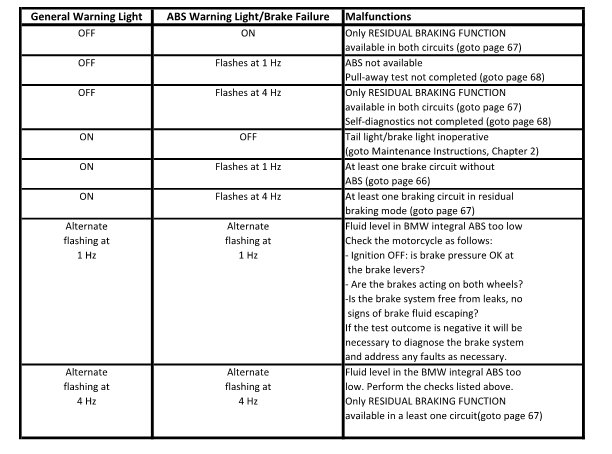prarierambler
New member
Changed the brake fluid on my 2003 R1150RS and all seemed to go well. This is the second time I and my trusty shop assistant have done this. Afterwards I took the bike for a test ride and the alternating warning lights on the dash came on and would not go away. (brake and triangle/exclamation point red lights flash alternately) Shut the bike off and restarted it with no change. Brakes are nice and firm as if the ABS was still working, but how do you know?
Took the bike apart again and checked all fluid levels (handlebar reservoir, rear reservoir and the two control unit reservoirs) and none were low. No leaks anywhere. Looked at the wires to the front and rear wheel sensors and they looked fine also. We are stumped. I'm four hours from the nearest dealer. (Engle Motors) I tried calling them and was told they had to lay hands on it. We had already checked everything the shop guy suggested we check. If anyone has seen this before and/or has a good suggestion for how this might be resolved by me and my trusty shop assistant, we would be most grateful. TIA
Took the bike apart again and checked all fluid levels (handlebar reservoir, rear reservoir and the two control unit reservoirs) and none were low. No leaks anywhere. Looked at the wires to the front and rear wheel sensors and they looked fine also. We are stumped. I'm four hours from the nearest dealer. (Engle Motors) I tried calling them and was told they had to lay hands on it. We had already checked everything the shop guy suggested we check. If anyone has seen this before and/or has a good suggestion for how this might be resolved by me and my trusty shop assistant, we would be most grateful. TIA


